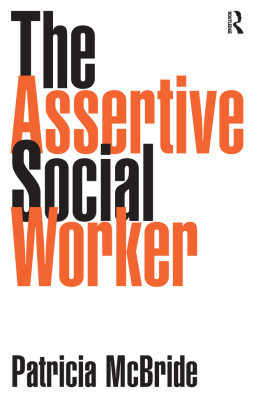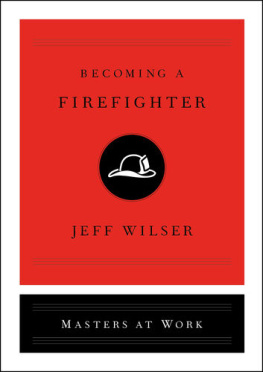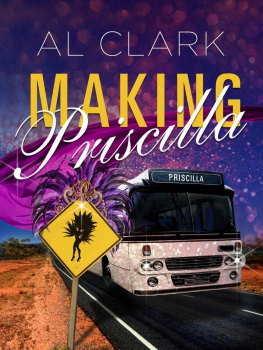Priscilla Dunk-West, under exclusive licence to Macmillan Publishers Ltd, part of Springer Nature 2018
All rights reserved. No reproduction, copy or transmission of this publication may be made without written permission.
No portion of this publication may be reproduced, copied or transmitted save with written permission or in accordance with the provisions of the Copyright, Designs and Patents Act 1988, or under the terms of any licence permitting limited copying issued by the Copyright Licensing Agency, Saffron House, 610 Kirby Street, London EC1N 8TS.
Any person who does any unauthorized act in relation to this publication may be liable to criminal prosecution and civil claims for damages.
The author has asserted her right to be identified as the author of this work in accordance with the Copyright, Designs and Patents Act 1988.
First published 2018 by
PALGRAVE
Palgrave in the UK is an imprint of Macmillan Publishers Limited, registered in England, company number 785998, of 4 Crinan Street, London, N1 9XW.
Palgrave and Macmillan are registered trademarks in the United States, the United Kingdom, Europe and other countries.
ISBN 9781137608048 paperback
This book is printed on paper suitable for recycling and made from fully managed and sustained forest sources. Logging, pulping and manufacturing processes are expected to conform to the environmental regulations of the country of origin.
A catalogue record for this book is available from the British Library.
A catalog record for this book is available from the Library of Congress.
Introduction
Since the publication of How to be a Social Worker in 2013, there have been many social and political shifts. Now so, more than ever, it is crucial that social workers remain committed to a clearly oriented and responsive identity. The rise of neo-liberal models of service provision and a diminishing role of the state in the funding of social service organisations threaten the foundations upon which a social justice oriented profession operates. The title of this book is drawn from the recognition that the process of becoming, of being, is an ongoing dynamic process central to social work. This book is not so much how to be a social worker but how to be a social worker. At times the beginning social work student can feel that they are without anchors in this process. This book is aimed to provide anchors: a handbook of guidance across the curriculum and into practice.
During the conceptualisation of this book I held an academic post at Coventry University, England. In this second edition of How to be a Social Worker, the following metaphor remains relevant to the task ahead of contemporary social work students. At the time of writing this book in 2013, the commute to work each day required crossing a road in shared space. This was essentially an intersection but with a difference. Coventry City Council adopted a European model of traffic management in which the travels of various forms of transport were encouraged to flow alongside one another. Encouraging the flow of traffic involves the removal of traditional traffic rules (Chris Young, pers. comm. 18 June 2012). Thus, there are no markings on this particular intersection, nor are there any traffic lights.
Having watched the construction of this intersection over a period of around six months, I grew more and more curious as to how such a removal of road rules would work. Would chaos ensue? Would people require a new set of rules? Would these apply to all modes of transport? Can we live without rules? What looked like a fairly standard intersection was, in fact, a radical undertaking. The appearance of the finished intersection is shown in Figure 0.1.
Figure 0.1 The intersection: What happens when our rules are removed?
Aside from the physical connection between my journey into Coventry and my thinking about this book, what does traffic have to do with social work? Our everyday activities, I believe, help us understand not only our external world, but our internal perceptions. Hopefully as you read this, the traffic metaphor will begin to make sense and will assist in providing some insight into the theoretical orientation upon which this book has been developed. But first, some overview as to how the book relates to social work students is needed.
In short, this book aims to teach the reader how to develop and establish their professional social work identity. This means not only learning how to be a social worker but also understanding how identity is made and appreciating how this self is related to its broader society. It is only through this awareness of the self that we can consciously fashion a social work selfand this is a process which continues throughout our careers. The ways in which we engage in this process shape the local, national and even international social work identity.
The book brings together the subjects studied during qualifying courses as well as engaging the reader in key debates and tensions in social work. A critical awareness of these, and their manifestations in practice, is vital to a positive social work identity. In this introductory chapter we will begin to examine how the social work identity is made. In order to understand this it is crucial to examine the self.
From the very beginning of study to completing the award, social work students can find it difficult to connect up the subjects they study in university with the experiences they have in placement, and often this continues well into ones social work practice career. The subjects studiedwhich range from human development to communication skills to researchcan feel somewhat separate from one another. This book aims to develop in the reader an understanding that the learning process is concerned with the construction or making of the social work self.
Back to our traffic metaphor. The experimental intersection held my interest because, as a social scientist, I am curious about the ways in which everyday rules shape our behaviour. I watched others reactions as they drove, cycled, walked into this new shared zone. I also drove and walked through the area.
What I noticed is that despite the absence of rules, people were required to enter the zone at a slower speed than on traditional roads. Generally speaking, the people I observed on my daily trek to work would approach the intersection as though diving into the unknown. When approaching a roundabout, for example, we have an understanding of the rules: giving way to traffic to ones right, waiting until there is a clear path, signalling direction through the use of indicatorsthese are all examples of the expected rules which help us negotiate our path on traditional roads. A traffic light is a very clearly defined set of rules with colours signalling certain actions. So the shared space was very different from these other types of intersections. The reduced speed on approach to the intersection was prompted by a lack of knowledge about what the rules were, and yet in the shared zone there are still rules. Motorists give way to others, people look to see if there is oncoming traffic, people allow others to proceed before them. There are rules in this systemthey are just different from those on traditional roads. Social theorists note that we are increasingly mobilewe move from home to study, we move to work and we can expect our careers to change. Of course mobilitythe ability to physically relocate ones self from one place to anotheris dependant upon the degree to which we have access to resources. Resources can help people to imagine what is possible and to employ particular resources to initiate change. We live in unequal times: the gap between the super rich and poverty appears to be increasing. We face new challenges in relation to food and fuel security and our environments are changing. What ever the reason that you have come to social work, you will need to employ a dual lens both to see the rules of social work and to understand the structures which prevent people from change.














